-
EXECUTIVE SUMMARY
-
MARKET INTRODUCTION
-
SCOPE OF THE STUDY
-
RESEARCH OBJECTIVE
-
MARKET STRUCTURE
-
ASSUMPTIONS & LIMITATIONS
-
RESEARCH METHODOLOGY
-
DATA MINING
-
SECONDARY RESEARCH
-
PRIMARY RESEARCH
-
BREAKDOWN OF PRIMARY RESPONDENTS
-
FORECASTING TECHNIQUES
-
RESEARCH METHODOLOGY FOR MARKET SIZE ESTIMATION
- BOTTOM-UP APPROACH
- TOP-DOWN APPROACH
-
DATA TRIANGULATION
-
VALIDATION
-
MARKET DYNAMICS
-
OVERVIEW
-
DRIVERS
- INCREASING PREVALENCE OF CHRONIC DISORDERS
- INCREASING SPENDING IN MEDICAL RESEARCH
-
RESTRAINT
- CONCERNS PERTAINING TO THE EFFICIENCY AND ACCURACY OF TEST KITS
-
OPPORTUNITY
- EMERGENCE OF AUTOMATED BLOOD GROUPING DEVICES
-
TECHNOLOGICAL DISRUPTION
-
MARKET FACTOR ANALYSIS
-
VALUE CHAIN ANALYSIS
- R&D AND DESIGNING
- MANUFACTURING
- DISTRIBUTION & SALES
- POST-SALES REVIEW
-
PORTER'S FIVE FORCES MODEL
- BARGAINING POWER OF BUYERS
- BARGAINING POWER OF SUPPLIERS
- THREAT OF NEW ENTRANTS
- THREAT OF SUBSTITUTES
- INTENSITY OF RIVALRY
-
IMPACT OF COVID-19
- IMPACT ON DEMAND
- IMPACT ON SUPPLY CHAIN
-
VOLUME OF TESTS FOR DONATED BLOOD, BY REGION, 2020
-
BLOOD TRANSFUSION VOLUME, BY REGION, 2020
-
GLOBAL BLOOD GROUPING REAGENTS, BY PRODUCT
-
OVERVIEW
-
CONSUMABLES
-
INSTRUMENTS
- FULLY-AUTOMATED INSTRUMENTS
- SEMI-AUTOMATED INSTRUMENTS
-
GLOBAL BLOOD GROUPING REAGENTS, BY TECHNIQUE
-
OVERVIEW
-
PCR-BASED AND MICROARRAY TECHNIQUE
-
ASSAY-BASED TECHNIQUES
-
MASSIVELY PARALLEL SEQUENCING TECHNIQUES
-
SEROLOGY
- GEL TECHNIQUE
- EMT
- SPRCA
- GLASS SLIDE AND TUBES
- CASSETTE/KIT
- OTHER SEROLOGY
-
OTHER TECHNIQUES
-
GLOBAL BLOOD GROUPING REAGENTS, BY TEST TYPE
-
OVERVIEW
-
BLOOD GROUP AND PHENOTYPES
-
ANTIBODY SCREENING
-
CROSSMATCHING TESTS
-
ANTIBODY IDENTIFICATION
-
COOMBS TEST
-
ANTIGEN TYPING
-
GLOBAL BLOOD GROUPING REAGENTS, BY END USER
-
OVERVIEW
-
HOSPITALS
-
BLOOD BANKS
-
CLINICAL LABORATORIES
-
GLOBAL BLOOD GROUPING REAGENTS MARKET, BY REGION
-
OVERVIEW
-
NORTH AMERICA
- US
- CANADA
-
EUROPE
- GERMANY
- UK
- FRANCE
- SPAIN
- ITALY
- REST OF EUROPE
-
ASIA PACIFIC
- CHINA
- JAPAN
- INDIA
- SOUTH KOREA
- AUSTRALIA
- REST OF ASIA-PACIFIC
-
REST OF THE WORLD
- MIDDLE EAST
- AFRICA
- LATIN AMERICA
-
COMPETITIVE LANDSCAPE
-
COMPETITIVE OVERVIEW
-
MAJOR PLAYERS IN THE GLOBAL BLOOD GROUPING REAGENTS MARKET
-
MAJOR GROWTH STRATEGIES IN THE GLOBAL BLOOD GROUPING REAGENTS MARKET
-
COMPETITIVE BENCHMARKING
-
LEADING PLAYERS IN TERMS OF NUMBER OF DEVELOPMENTS IN THE GLOBAL BLOOD GROUPING REAGENTS MARKET
-
KEY DEVELOPMENTS & GROWTH STRATEGIES
- NEW PRODUCT DEVELOPMENTS/LAUNCHES
- COLLABORATIONS/EXPANSIONS/PARTNERSHIPS/INVESTMENTS
-
MAJOR PLAYERS FINANCIAL MATRIX
- REVENUE OF MAJOR PLAYERS, 2020
- R&D EXPENDITURE
-
COMPANY PROFILES
-
MERCK KGAA
- COMPANY OVERVIEW
- FINANCIAL OVERVIEW
- PRODUCTS OFFERED
- KEY DEVELOPMENTS
- SWOT ANALYSIS
- KEY STRATEGIES
-
BIO-RAD LABORATORIES, INC.
- COMPANY OVERVIEW
- FINANCIAL OVERVIEW
- PRODUCTS OFFERED
- KEY DEVELOPMENTS
- SWOT ANALYSIS
- KEY STRATEGIES
-
NOVACYT GROUP
- COMPANY OVERVIEW
- FINANCIAL OVERVIEW
- PRODUCTS/SERVICES OFFERED
- KEY DEVELOPMENTS
- KEY STRATEGIES
-
BECKMAN COULTER, INC.
- COMPANY OVERVIEW
- FINANCIAL OVERVIEW
- PRODUCTS OFFERED
- KEY DEVELOPMENTS
- KEY STRATEGIES
-
HAEMOKINESIS PTY LTD
- COMPANY OVERVIEW
- FINANCIAL OVERVIEW
- PRODUCTS OFFERED
- KEY DEVELOPMENTS
- KEY STRATEGIES
-
MTC MED. PRODUKTE GMBH
- COMPANY OVERVIEW
- FINANCIAL OVERVIEW
- PRODUCTS/SERVICES OFFERED
- KEY DEVELOPMENTS
- KEY STRATEGIES
-
DAY MEDICAL SA
- COMPANY OVERVIEW
- FINANCIAL OVERVIEW
- PRODUCTS OFFERED
- KEY DEVELOPMENTS
- KEY STRATEGIES
-
RAPID LABS LTD
- COMPANY OVERVIEW
- FINANCIAL OVERVIEW
- PRODUCTS OFFERED
- KEY DEVELOPMENTS
- KEY STRATEGIES
-
ORTHO CLINICAL DIAGNOSTICS
- COMPANY OVERVIEW
- FINANCIAL OVERVIEW
- PRODUCTS OFFERED
- KEY DEVELOPMENTS
- SWOT ANALYSIS
- KEY STRATEGIES
-
DIAGAST SAS
- COMPANY OVERVIEW
- FINANCIAL OVERVIEW
- PRODUCTS/SERVICES OFFERED
- KEY DEVELOPMENTS
- KEY STRATEGIES
-
GRIFOLS SA
- COMPANY OVERVIEW
- FINANCIAL OVERVIEW
- PRODUCTS/SERVICES OFFERED
- KEY DEVELOPMENTS
- SWOT ANALYSIS
- KEY STRATEGIES
-
IMMUCOR, INC.
- COMPANY OVERVIEW
- FINANCIAL OVERVIEW
- PRODUCTS/SERVICES OFFERED
- KEY DEVELOPMENTS
- SWOT ANALYSIS
- KEY STRATEGIES
-
QUOTIENT LTD
- COMPANY OVERVIEWS
- FINANCIAL OVERVIEW
- PRODUCTS/SERVICES OFFERED
- KEY DEVELOPMENTS
- SWOT ANALYSIS
- KEY STRATEGIES
-
YUVRAJ BIOBIZ INCUBATOR INDIA PVT LTD
- COMPANY OVERVIEW
- FINANCIAL OVERVIEW
- PRODUCTS/SERVICES OFFERED
- KEY DEVELOPMENTS
- KEY STRATEGIES
-
TULIP DIAGNOSTICS
- COMPANY OVERVIEW
- FINANCIAL OVERVIEW
- PRODUCTS/SERVICES OFFERED
- KEY DEVELOPMENTS
- KEY STRATEGIES
-
AIKANG
- COMPANY OVERVIEW
- FINANCIAL OVERVIEW
- PRODUCTS/SERVICES OFFERED
- KEY DEVELOPMENTS
- KEY STRATEGIES
-
INTEC
- COMPANY OVERVIEW
- FINANCIAL OVERVIEW
- PRODUCTS OFFERED
- KEY DEVELOPMENTS
- KEY STRATEGIES
-
APPENDIX
-
REFERENCES
-
RELATED REPORTS
-
-
LIST OF TABLES
-
LIST OF ASSUMPTIONS & LIMITATIONS
-
PRIMARY INTERVIEWS AND INFORMATION GATHERING PROCESS
-
PREVALENCE OF TRANSFUSION-TRANSMISSIBLE INFECTIONS IN BLOOD DONATIONS (MEDIAN, INTERQUARTILE RANGE (IQR)), BY INCOME GROUPS
-
AVERAGE VOLUME OF TESTS, BY REGION (MILLION)
-
AVERAGE BLOOD TRANSFUSION VOLUME, BY REGION (MILLION UNITS)
-
GLOBAL: BLOOD GROUPING REAGENTS MARKET, BY PRODUCT, 2022–2030 (USD MILLION)
-
GLOBAL: BLOOD GROUPING REAGENTS MARKET, FOR CONSUMABLES, BY REGION, 2022–2030 (USD MILLION)
-
GLOBAL: BLOOD GROUPING REAGENTS MARKET, FOR INSTRUMENTS, BY REGION, 2022–2030 (USD MILLION)
-
GLOBAL: BLOOD GROUPING REAGENTS MARKET, FOR INSTRUMENTS, BY TYPE, 2022–2030 (USD MILLION)
-
GLOBAL: BLOOD GROUPING REAGENTS MARKET, FOR FULLY-AUTOMATED, BY REGION, 2022–2030 (USD MILLION)
-
GLOBAL: BLOOD GROUPING REAGENTS MARKET, FOR SEMI-AUTOMATED, BY REGION, 2022–2030 (USD MILLION)
-
GLOBAL: BLOOD GROUPING REAGENTS MARKET, BY TECHNIQUE, 2022–2030 (USD MILLION)
-
GLOBAL: BLOOD GROUPING REAGENTS MARKET, FOR PCR-BASED AND MICROARRAY TECHNIQUE, BY REGION, 2022–2030 (USD MILLION)
-
GLOBAL: BLOOD GROUPING REAGENTS MARKET, FOR ASSAY-BASED TECHNIQUES, BY REGION, 2022–2030 (USD MILLION)
-
GLOBAL: BLOOD GROUPING REAGENTS MARKET, FOR MASSIVELY PARALLEL SEQUENCING TECHNIQUES, BY REGION, 2022–2030 (USD MILLION)
-
GLOBAL: BLOOD GROUPING REAGENTS MARKET, FOR SEROLOGY, BY REGION, 2022–2030 (USD MILLION)
-
GLOBAL: BLOOD GROUPING REAGENTS MARKET, FOR SEROLOGY, BY TYPE, 2022–2030 (USD MILLION)
-
GLOBAL: BLOOD GROUPING REAGENTS MARKET, FOR GEL TECHNIQUE, BY REGION, 2022–2030 (USD MILLION)
-
GLOBAL: BLOOD GROUPING REAGENTS MARKET, FOR EMT, BY REGION, 2022–2030 (USD MILLION)
-
GLOBAL: BLOOD GROUPING REAGENTS MARKET, FOR SPRCA, BY REGION, 2022–2030 (USD MILLION)
-
GLOBAL: BLOOD GROUPING REAGENTS MARKET, FOR GLASS SLIDE AND TUBES, BY REGION, 2022–2030 (USD MILLION)
-
GLOBAL: BLOOD GROUPING REAGENTS MARKET, FOR CASSETTE/KIT, BY REGION, 2022–2030 (USD MILLION)
-
GLOBAL: BLOOD GROUPING REAGENTS MARKET, FOR OTHER SEROLOGY, BY REGION, 2022–2030 (USD MILLION)
-
GLOBAL: BLOOD GROUPING REAGENTS MARKET, FOR OTHER TECHNIQUES, BY REGION, 2022–2030 (USD MILLION)
-
GLOBAL: BLOOD GROUPING REAGENTS MARKET, BY TEST TYPE, 2022–2030 (USD MILLION)
-
GLOBAL: BLOOD GROUPING REAGENTS MARKET, FOR BLOOD GROUP AND PHENOTYPE, BY REGION, 2022–2030 (USD MILLION)
-
GLOBAL: BLOOD GROUPING REAGENTS MARKET, FOR ANTIBODY SCREENING, BY REGION, 2022–2030 (USD MILLION)
-
GLOBAL: BLOOD GROUPING REAGENTS MARKET, FOR CROSS-MATCHING TESTS, BY REGION, 2022–2030 (USD MILLION)
-
GLOBAL: BLOOD GROUPING REAGENTS MARKET, FOR ANTIBODY IDENTIFICATION, BY REGION, 2022–2030 (USD MILLION)
-
GLOBAL: BLOOD GROUPING REAGENTS MARKET, FOR COOMBS TESTS, BY REGION, 2022–2030 (USD MILLION)
-
GLOBAL: BLOOD GROUPING REAGENTS MARKET, FOR ANTIGEN TYPING, BY REGION, 2022–2030 (USD MILLION)
-
GLOBAL: BLOOD GROUPING REAGENTS MARKET, BY END USER, 2022–2030 (USD MILLION)
-
GLOBAL: BLOOD GROUPING REAGENTS MARKET, FOR HOSPITALS, BY REGION, 2022–2030 (USD MILLION)
-
GLOBAL: BLOOD GROUPING REAGENTS MARKET, FOR BLOOD BANKS, BY REGION, 2022–2030 (USD MILLION)
-
GLOBAL: BLOOD GROUPING REAGENTS MARKET, FOR CLINICAL LABORATORIES, BY REGION, 2022–2030 (USD MILLION)
-
GLOBAL: BLOOD GROUPING REAGENTS MARKET, BY REGION, 2022–2030 (USD MILLION)
-
NORTH AMERICA: BLOOD GROUPING REAGENTS MARKET, BY COUNTRY, 2022–2030 (USD MILLION)
-
NORTH AMERICA: BLOOD GROUPING REAGENTS MARKET, BY PRODUCT, 2022-2030 (USD MILLION)
-
NORTH AMERICA: BLOOD GROUPING REAGENTS MARKET FOR INSTRUMENTS, BY PRODUCT, 2022-2030 (USD MILLION)
-
NORTH AMERICA: BLOOD GROUPING REAGENTS MARKET, BY TECHNIQUE, 2022-2030 (USD MILLION)
-
NORTH AMERICA: BLOOD GROUPING REAGENTS MARKET FOR SEROLOGY, BY TECHNIQUE, 2022-2030 (USD MILLION)
-
NORTH AMERICA: BLOOD GROUPING REAGENTS MARKET, BY TEST TYPE, 2022-2030 (USD MILLION)
-
NORTH AMERICA: BLOOD GROUPING REAGENTS MARKET, BY END USER, 2022-2030 (USD MILLION)
-
US: BLOOD GROUPING REAGENTS MARKET, BY PRODUCT, 2022-2030 (USD MILLION)
-
US: BLOOD GROUPING REAGENTS MARKET FOR INSTRUMENTS, BY PRODUCT, 2022-2030 (USD MILLION)
-
US: BLOOD GROUPING REAGENTS MARKET, BY TECHNIQUE, 2022-2030 (USD MILLION)
-
US: BLOOD GROUPING REAGENTS MARKET FOR SEROLOGY, BY TECHNIQUE, 2022-2030 (USD MILLION)
-
US: BLOOD GROUPING REAGENTS MARKET, BY TEST TYPE, 2022-2030 (USD MILLION)
-
US: BLOOD GROUPING REAGENTS MARKET, BY END USER, 2022-2030 (USD MILLION)
-
CANADA: BLOOD GROUPING REAGENTS MARKET, BY PRODUCT, 2022-2030 (USD MILLION)
-
CANADA: BLOOD GROUPING REAGENTS MARKET FOR INSTRUMENTS, BY PRODUCT, 2022-2030 (USD MILLION)
-
CANADA: BLOOD GROUPING REAGENTS MARKET, BY TECHNIQUE, 2022-2030 (USD MILLION)
-
CANADA: BLOOD GROUPING REAGENTS MARKET FOR SEROLOGY, BY TECHNIQUE, 2022-2030 (USD MILLION)
-
CANADA: BLOOD GROUPING REAGENTS MARKET, BY TEST TYPE, 2022-2030 (USD MILLION)
-
CANADA: BLOOD GROUPING REAGENTS MARKET, BY END USER, 2022-2030 (USD MILLION)
-
EUROPE: BLOOD GROUPING REAGENTS MARKET, BY COUNTRY, 2022–2030 (USD MILLION)
-
EUROPE: BLOOD GROUPING REAGENTS MARKET, BY PRODUCT, 2022-2030 (USD MILLION)
-
EUROPE: BLOOD GROUPING REAGENTS MARKET FOR INSTRUMENTS, BY PRODUCT, 2022-2030 (USD MILLION)
-
EUROPE: BLOOD GROUPING REAGENTS MARKET, BY TECHNIQUE, 2022-2030 (USD MILLION)
-
EUROPE: BLOOD GROUPING REAGENTS MARKET FOR SEROLOGY, BY TECHNIQUE, 2022-2030 (USD MILLION)
-
EUROPE: BLOOD GROUPING REAGENTS MARKET, BY TEST TYPE, 2022-2030 (USD MILLION)
-
EUROPE: BLOOD GROUPING REAGENTS MARKET, BY END USER, 2022-2030 (USD MILLION)
-
GERMANY: BLOOD GROUPING REAGENTS MARKET, BY PRODUCT, 2022-2030 (USD MILLION)
-
GERMANY: BLOOD GROUPING REAGENTS MARKET FOR INSTRUMENTS, BY PRODUCT, 2022-2030 (USD MILLION)
-
GERMANY: BLOOD GROUPING REAGENTS MARKET, BY TECHNIQUE, 2022-2030 (USD MILLION)
-
GERMANY: BLOOD GROUPING REAGENTS MARKET FOR SEROLOGY, BY TECHNIQUE, 2022-2030 (USD MILLION)
-
GERMANY: BLOOD GROUPING REAGENTS MARKET, BY TEST TYPE, 2022-2030 (USD MILLION)
-
GERMANY: BLOOD GROUPING REAGENTS MARKET, BY END USER, 2022-2030 (USD MILLION)
-
UK: BLOOD GROUPING REAGENTS MARKET, BY PRODUCT, 2022-2030 (USD MILLION)
-
UK: BLOOD GROUPING REAGENTS MARKET FOR INSTRUMENTS, BY PRODUCT, 2022-2030 (USD MILLION)
-
UK: BLOOD GROUPING REAGENTS MARKET, BY TECHNIQUE, 2022-2030 (USD MILLION)
-
UK: BLOOD GROUPING REAGENTS MARKET FOR SEROLOGY, BY TECHNIQUE, 2022-2030 (USD MILLION)
-
UK: BLOOD GROUPING REAGENTS MARKET, BY TEST TYPE, 2022-2030 (USD MILLION)
-
UK: BLOOD GROUPING REAGENTS MARKET, BY END USER, 2022-2030 (USD MILLION)
-
FRANCE: BLOOD GROUPING REAGENTS MARKET, BY PRODUCT, 2022-2030 (USD MILLION)
-
FRANCE: BLOOD GROUPING REAGENTS MARKET FOR INSTRUMENTS, BY PRODUCT, 2022-2030 (USD MILLION)
-
FRANCE: BLOOD GROUPING REAGENTS MARKET, BY TECHNIQUE, 2022-2030 (USD MILLION)
-
FRANCE: BLOOD GROUPING REAGENTS MARKET FOR SEROLOGY, BY TECHNIQUE, 2022-2030 (USD MILLION)
-
FRANCE: BLOOD GROUPING REAGENTS MARKET, BY TEST TYPE, 2022-2030 (USD MILLION)
-
FRANCE: BLOOD GROUPING REAGENTS MARKET, BY END USER, 2022-2030 (USD MILLION)
-
SPAIN: BLOOD GROUPING REAGENTS MARKET, BY PRODUCT, 2022-2030 (USD MILLION)
-
SPAIN: BLOOD GROUPING REAGENTS MARKET FOR INSTRUMENTS, BY PRODUCT, 2022-2030 (USD MILLION)
-
SPAIN: BLOOD GROUPING REAGENTS MARKET, BY TECHNIQUE, 2022-2030 (USD MILLION)
-
SPAIN: BLOOD GROUPING REAGENTS MARKET FOR SEROLOGY, BY TECHNIQUE, 2022-2030 (USD MILLION)
-
SPAIN: BLOOD GROUPING REAGENTS MARKET, BY TEST TYPE, 2022-2030 (USD MILLION)
-
SPAIN: BLOOD GROUPING REAGENTS MARKET, BY END USER, 2022-2030 (USD MILLION)
-
ITALY: BLOOD GROUPING REAGENTS MARKET, BY PRODUCT, 2022-2030 (USD MILLION)
-
ITALY: BLOOD GROUPING REAGENTS MARKET FOR INSTRUMENTS, BY PRODUCT, 2022-2030 (USD MILLION)
-
ITALY: BLOOD GROUPING REAGENTS MARKET, BY TECHNIQUE, 2022-2030 (USD MILLION)
-
ITALY: BLOOD GROUPING REAGENTS MARKET FOR SEROLOGY, BY TECHNIQUE, 2022-2030 (USD MILLION)
-
ITALY: BLOOD GROUPING REAGENTS MARKET, BY TEST TYPE, 2022-2030 (USD MILLION)
-
ITALY: BLOOD GROUPING REAGENTS MARKET, BY END USER, 2022-2030 (USD MILLION)
-
REST OF EUROPE: BLOOD GROUPING REAGENTS MARKET, BY PRODUCT, 2022-2030 (USD MILLION)
-
REST OF EUROPE: BLOOD GROUPING REAGENTS MARKET FOR INSTRUMENTS, BY PRODUCT, 2022-2030 (USD MILLION)
-
REST OF EUROPE: BLOOD GROUPING REAGENTS MARKET, BY TECHNIQUE, 2022-2030 (USD MILLION)
-
REST OF EUROPE: BLOOD GROUPING REAGENTS MARKET FOR SEROLOGY, BY TECHNIQUE, 2022-2030 (USD MILLION)
-
REST OF EUROPE: BLOOD GROUPING REAGENTS MARKET, BY TEST TYPE, 2022-2030 (USD MILLION)
-
REST OF EUROPE: BLOOD GROUPING REAGENTS MARKET, BY END USER, 2022-2030 (USD MILLION)
-
ASIA PACIFIC: BLOOD GROUPING REAGENTS MARKET, BY COUNTRY, 2022–2030 (USD MILLION)
-
ASIA PACIFIC: BLOOD GROUPING REAGENTS MARKET, BY PRODUCT, 2022-2030 (USD MILLION)
-
ASIA PACIFIC: BLOOD GROUPING REAGENTS MARKET FOR INSTRUMENTS, BY PRODUCT, 2022-2030 (USD MILLION)
-
ASIA PACIFIC: BLOOD GROUPING REAGENTS MARKET, BY TECHNIQUE, 2022-2030 (USD MILLION)
-
ASIA PACIFIC: BLOOD GROUPING REAGENTS MARKET FOR SEROLOGY, BY TECHNIQUE, 2022-2030 (USD MILLION)
-
ASIA PACIFIC: BLOOD GROUPING REAGENTS MARKET, BY TEST TYPE, 2022-2030 (USD MILLION)
-
ASIA PACIFIC: BLOOD GROUPING REAGENTS MARKET, BY END USER, 2022-2030 (USD MILLION)
-
CHINA: BLOOD GROUPING REAGENTS MARKET, BY PRODUCT, 2022-2030 (USD MILLION)
-
CHINA: BLOOD GROUPING REAGENTS MARKET FOR INSTRUMENTS, BY PRODUCT, 2022-2030 (USD MILLION)
-
CHINA: BLOOD GROUPING REAGENTS MARKET, BY TECHNIQUE, 2022-2030 (USD MILLION)
-
CHINA: BLOOD GROUPING REAGENTS MARKET FOR SEROLOGY, BY TECHNIQUE, 2022-2030 (USD MILLION)
-
CHINA: BLOOD GROUPING REAGENTS MARKET, BY TEST TYPE, 2022-2030 (USD MILLION)
-
CHINA: BLOOD GROUPING REAGENTS MARKET, BY END USER, 2022-2030 (USD MILLION)
-
JAPAN: BLOOD GROUPING REAGENTS MARKET, BY PRODUCT, 2022-2030 (USD MILLION)
-
JAPAN: BLOOD GROUPING REAGENTS MARKET FOR INSTRUMENTS, BY PRODUCT, 2022-2030 (USD MILLION)
-
JAPAN: BLOOD GROUPING REAGENTS MARKET, BY TECHNIQUE, 2022-2030 (USD MILLION)
-
JAPAN: BLOOD GROUPING REAGENTS MARKET FOR SEROLOGY, BY TECHNIQUE, 2022-2030 (USD MILLION)
-
JAPAN: BLOOD GROUPING REAGENTS MARKET, BY TEST TYPE, 2022-2030 (USD MILLION)
-
JAPAN: BLOOD GROUPING REAGENTS MARKET, BY END USER, 2022-2030 (USD MILLION)
-
INDIA: BLOOD GROUPING REAGENTS MARKET, BY PRODUCT, 2022-2030 (USD MILLION)
-
INDIA: BLOOD GROUPING REAGENTS MARKET FOR INSTRUMENTS, BY PRODUCT, 2022-2030 (USD MILLION)
-
INDIA: BLOOD GROUPING REAGENTS MARKET, BY TECHNIQUE, 2022-2030 (USD MILLION)
-
INDIA: BLOOD GROUPING REAGENTS MARKET FOR SEROLOGY, BY TECHNIQUE, 2022-2030 (USD MILLION)
-
INDIA: BLOOD GROUPING REAGENTS MARKET, BY TEST TYPE, 2022-2030 (USD MILLION)
-
INDIA: BLOOD GROUPING REAGENTS MARKET, BY END USER, 2022-2030 (USD MILLION)
-
SOUTH KOREA: BLOOD GROUPING REAGENTS MARKET, BY PRODUCT, 2022-2030 (USD MILLION)
-
SOUTH KOREA: BLOOD GROUPING REAGENTS MARKET FOR INSTRUMENTS, BY PRODUCT, 2022-2030 (USD MILLION)
-
SOUTH KOREA: BLOOD GROUPING REAGENTS MARKET, BY TECHNIQUE, 2022-2030 (USD MILLION)
-
SOUTH KOREA: BLOOD GROUPING REAGENTS MARKET FOR SEROLOGY, BY TECHNIQUE, 2022-2030 (USD MILLION)
-
SOUTH KOREA: BLOOD GROUPING REAGENTS MARKET, BY TEST TYPE, 2022-2030 (USD MILLION)
-
SOUTH KOREA: BLOOD GROUPING REAGENTS MARKET, BY END USER, 2022-2030 (USD MILLION)
-
AUSTRALIA: BLOOD GROUPING REAGENTS MARKET, BY PRODUCT, 2022-2030 (USD MILLION)
-
AUSTRALIA: BLOOD GROUPING REAGENTS MARKET FOR INSTRUMENTS, BY PRODUCT, 2022-2030 (USD MILLION)
-
AUSTRALIA: BLOOD GROUPING REAGENTS MARKET, BY TECHNIQUE, 2022-2030 (USD MILLION)
-
AUSTRALIA: BLOOD GROUPING REAGENTS MARKET FOR SEROLOGY, BY TECHNIQUE, 2022-2030 (USD MILLION)
-
AUSTRALIA: BLOOD GROUPING REAGENTS MARKET, BY TEST TYPE, 2022-2030 (USD MILLION)
-
AUSTRALIA: BLOOD GROUPING REAGENTS MARKET, BY END USER, 2022-2030 (USD MILLION)
-
REST OF ASIA-PACIFIC: BLOOD GROUPING REAGENTS MARKET, BY PRODUCT, 2022-2030 (USD MILLION)
-
REST OF ASIA-PACIFIC: BLOOD GROUPING REAGENTS MARKET FOR INSTRUMENTS, BY PRODUCT, 2022-2030 (USD MILLION)
-
REST OF ASIA-PACIFIC: BLOOD GROUPING REAGENTS MARKET, BY TECHNIQUE, 2022-2030 (USD MILLION)
-
REST OF ASIA-PACIFIC: BLOOD GROUPING REAGENTS MARKET FOR SEROLOGY, BY TECHNIQUE, 2022-2030 (USD MILLION)
-
REST OF ASIA-PACIFIC: BLOOD GROUPING REAGENTS MARKET, BY TEST TYPE, 2022-2030 (USD MILLION)
-
REST OF ASIA-PACIFIC: BLOOD GROUPING REAGENTS MARKET, BY END USER, 2022-2030 (USD MILLION)
-
REST OF THE WORLD: BLOOD GROUPING REAGENTS MARKET, BY REGION, 2022–2030 (USD MILLION)
-
REST OF THE WORLD: BLOOD GROUPING REAGENTS MARKET, BY PRODUCT, 2022-2030 (USD MILLION)
-
REST OF THE WORLD: BLOOD GROUPING REAGENTS MARKET FOR INSTRUMENTS, BY PRODUCT, 2022-2030 (USD MILLION)
-
REST OF THE WORLD: BLOOD GROUPING REAGENTS MARKET, BY TECHNIQUE, 2022-2030 (USD MILLION)
-
REST OF THE WORLD: BLOOD GROUPING REAGENTS MARKET FOR SEROLOGY, BY TECHNIQUE, 2022-2030 (USD MILLION)
-
REST OF THE WORLD: BLOOD GROUPING REAGENTS MARKET, BY TEST TYPE, 2022-2030 (USD MILLION)
-
REST OF THE WORLD: BLOOD GROUPING REAGENTS MARKET, BY END USER, 2022-2030 (USD MILLION)
-
MIDDLE EAST: BLOOD GROUPING REAGENTS MARKET, BY PRODUCT, 2022-2030 (USD MILLION)
-
MIDDLE EAST: BLOOD GROUPING REAGENTS MARKET FOR INSTRUMENTS, BY PRODUCT, 2022-2030 (USD MILLION)
-
MIDDLE EAST: BLOOD GROUPING REAGENTS MARKET, BY TECHNIQUE, 2022-2030 (USD MILLION)
-
MIDDLE EAST: BLOOD GROUPING REAGENTS MARKET FOR SEROLOGY, BY TECHNIQUE, 2022-2030 (USD MILLION)
-
MIDDLE EAST: BLOOD GROUPING REAGENTS MARKET, BY TEST TYPE, 2022-2030 (USD MILLION)
-
MIDDLE EAST: BLOOD GROUPING REAGENTS MARKET, BY END USER, 2022-2030 (USD MILLION)
-
AFRICA: BLOOD GROUPING REAGENTS MARKET, BY PRODUCT, 2022-2030 (USD MILLION)
-
AFRICA: BLOOD GROUPING REAGENTS MARKET FOR INSTRUMENTS, BY PRODUCT, 2022-2030 (USD MILLION)
-
AFRICA: BLOOD GROUPING REAGENTS MARKET, BY TECHNIQUE, 2022-2030 (USD MILLION)
-
AFRICA: BLOOD GROUPING REAGENTS MARKET FOR SEROLOGY, BY TECHNIQUE, 2022-2030 (USD MILLION)
-
AFRICA: BLOOD GROUPING REAGENTS MARKET, BY TEST TYPE, 2022-2030 (USD MILLION)
-
AFRICA: BLOOD GROUPING REAGENTS MARKET, BY END USER, 2022-2030 (USD MILLION)
-
LATIN AMERICA: BLOOD GROUPING REAGENTS MARKET, BY PRODUCT, 2022-2030 (USD MILLION)
-
LATIN AMERICA: BLOOD GROUPING REAGENTS MARKET FOR INSTRUMENTS, BY PRODUCT, 2022-2030 (USD MILLION)
-
LATIN AMERICA: BLOOD GROUPING REAGENTS MARKET, BY TECHNIQUE, 2022-2030 (USD MILLION)
-
LATIN AMERICA: BLOOD GROUPING REAGENTS MARKET FOR SEROLOGY, BY TECHNIQUE, 2022-2030 (USD MILLION)
-
LATIN AMERICA: BLOOD GROUPING REAGENTS MARKET, BY TEST TYPE, 2022-2030 (USD MILLION)
-
LATIN AMERICA: BLOOD GROUPING REAGENTS MARKET, BY END USER, 2022-2030 (USD MILLION)
-
MAJOR PLAYERS IN THE GLOBAL BLOOD GROUPING REAGENTS MARKET
-
THE MOST ACTIVE PLAYERS IN THE GLOBAL BLOOD GROUPING REAGENTS MARKET
-
NEW PRODUCT DEVELOPMENTS/LAUNCHES
-
COLLABORATIONS/EXPANSIONS/PARTNERSHIPS/INVESTMENTS
-
MERCK KGAA: PRODUCTS OFFERED
-
MERCK KGAA: KEY DEVELOPMENTS
-
BIO-RAD LABORATORIES, INC.: PRODUCTS OFFERED
-
NOVACYT GROUP: PRODUCTS/SERVICES OFFERED
-
BECKMAN COULTER, INC.: PRODUCTS OFFERED
-
BECKMAN COULTER, INC.: KEY DEVELOPMENTS
-
HAEMOKINESIS PTY LTD: PRODUCTS OFFERED
-
MTC MED. PRODUKTE GMBH: PRODUCTS/TECHNOLOGIES OFFERED
-
DAY MEDICAL SA: PRODUCTS/TECHNOLOGIES OFFERED
-
RAPID LABS LTD: PRODUCTS OFFERED
-
ORTHO CLINICAL DIAGNOSTICS: PRODUCTS OFFERED
-
DIAGAST SAS: PRODUCTS/SERVICES OFFERED
-
GRIFOLS SA: PRODUCTS/SERVICES OFFERED
-
IMMUCOR, INC.: PRODUCTS/SERVICES OFFERED
-
QUOTIENT LTD: PRODUCTS/SERVICES OFFERED
-
QUOTIENT LTD: KEY DEVELOPMENTS
-
YUVRAJ BIOBIZ INCUBATOR INDIA PVT LTD: PRODUCTS/SERVICES OFFERED
-
TULIP DIAGNOSTICS: PRODUCTS/SERVICES OFFERED
-
AIKANG: PRODUCTS/SERVICES OFFERED
-
INTEC: PRODUCTS OFFERED
-
-
LIST OF FIGURES
-
MARKET SYNOPSIS
-
MARKET STRUCTURE: GLOBAL BLOOD GROUPING REAGENTS MARKET
-
BOTTOM-UP AND TOP-DOWN APPROACHES
-
MARKET DYNAMICS: GLOBAL BLOOD GROUPING REAGENTS MARKET
-
DRIVERS: IMPACT ANALYSIS
-
RESTRAINT: IMPACT ANALYSIS
-
VALUE CHAIN: GLOBAL BLOOD GROUPING REAGENTS MARKET
-
PORTER'S FIVE FORCES ANALYSIS: GLOBAL BLOOD GROUPING REAGENTS MARKET
-
GLOBAL BLOOD GROUPING REAGENTS MARKET, BY PRODUCT, 2020 & 2030 (USD MILLION)
-
GLOBAL: BLOOD GROUPING REAGENTS MARKET, BY TECHNIQUE, 2020 & 2030 (USD MILLION)
-
GLOBAL: BLOOD GROUPING REAGENTS MARKET, BY TEST TYPE, 2020 & 2030 (USD MILLION)
-
GLOBAL: BLOOD GROUPING REAGENTS MARKET, BY END USER, 2020 & 2030 (USD MILLION)
-
GLOBAL: BLOOD GROUPING REAGENTS MARKET, BY REGION 2020 & 2030 (USD MILLION)
-
NORTH AMERICA: BLOOD GROUPING REAGENTS MARKET SHARE (%), BY COUNTRY 2020 (%)
-
EUROPE: BLOOD GROUPING REAGENTS MARKET SHARE (%), BY COUNTRY, 2020
-
ASIA PACIFIC: BLOOD GROUPING REAGENTS MARKET SHARE (%), BY COUNTRY, 2020
-
REST OF THE WORLD: BLOOD GROUPING REAGENTS MARKET SHARE (%), BY REGION, 2020
-
THE MAJOR STRATEGY ADOPTED BY KEY PLAYERS IN THE GLOBAL BLOOD GROUPING REAGENTS MARKET
-
BENCHMARKING OF MAJOR COMPETITORS
-
REVENUE OF MAJOR PLAYERS, 2020
-
MAJOR PLAYERS R&D EXPENDITURE 2020
-
MERCK KGAA: FINANCIAL OVERVIEW SNAPSHOT
-
MERCK KGAA: SWOT ANALYSIS
-
BIO-RAD LABORATORIES, INC.: FINANCIAL OVERVIEW SNAPSHOT
-
BIO-RAD LABORATORIES, INC.: SWOT ANALYSIS
-
NOVACYT GROUP: FINANCIAL OVERVIEW SNAPSHOT
-
ORTHO CLINICAL DIAGNOSTICS: FINANCIAL OVERVIEW SNAPSHOT
-
ORTHO CLINICAL DIAGNOSTICS: SWOT ANALYSIS
-
GRIFOLS SA: FINANCIAL OVERVIEW SNAPSHOT
-
GRIFOLS SA: SWOT ANALYSIS
-
IMMUCOR, INC.: SWOT ANALYSIS
-
QUOTIENT LTD: FINANCIAL OVERVIEW SNAPSHOT
-
QUOTIENT LTD: SWOT ANALYSIS

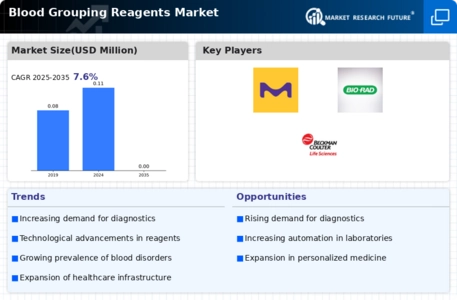
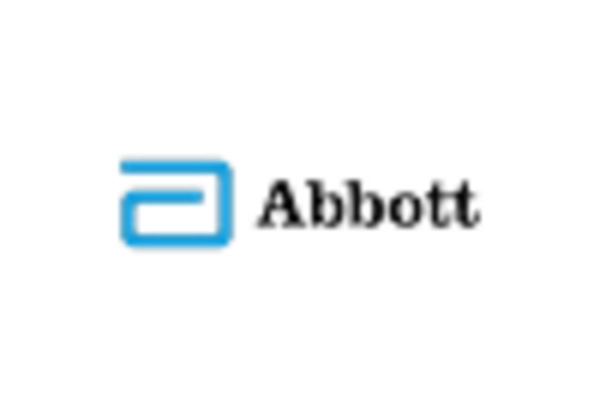
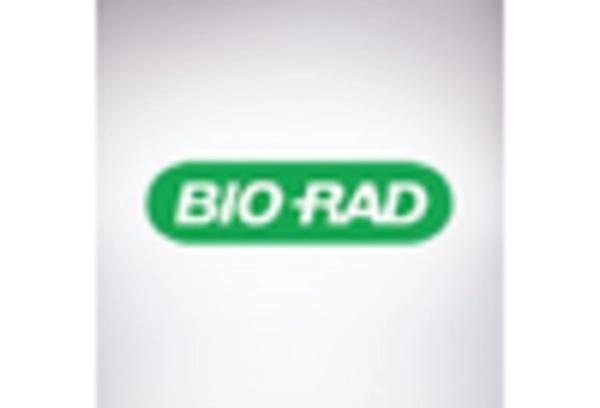
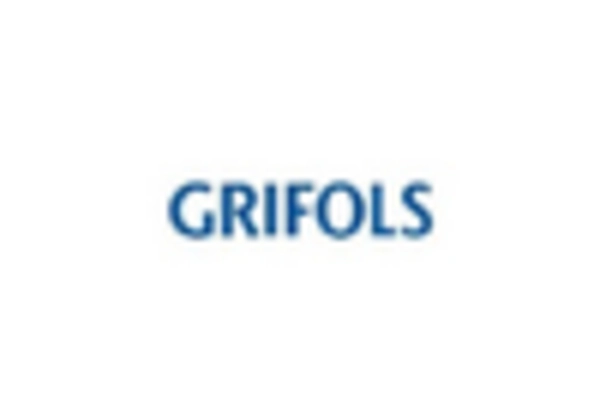
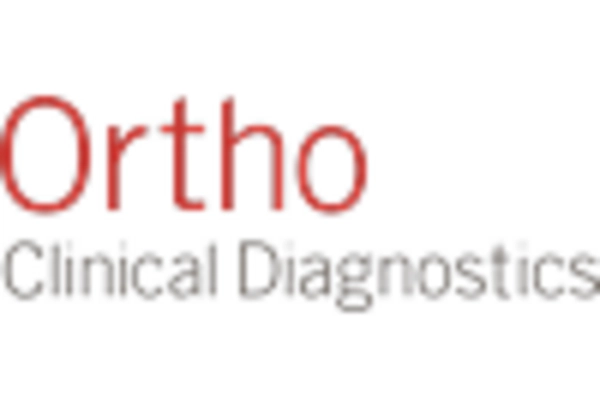
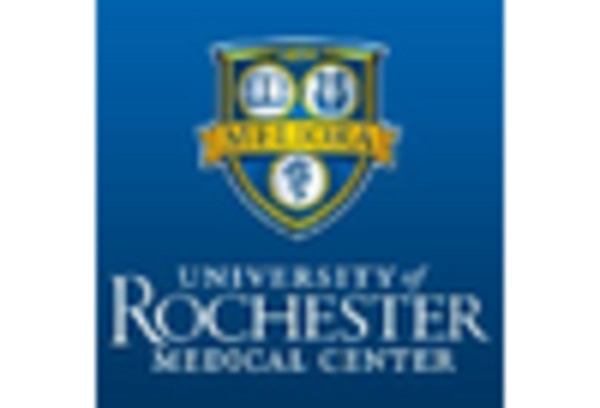
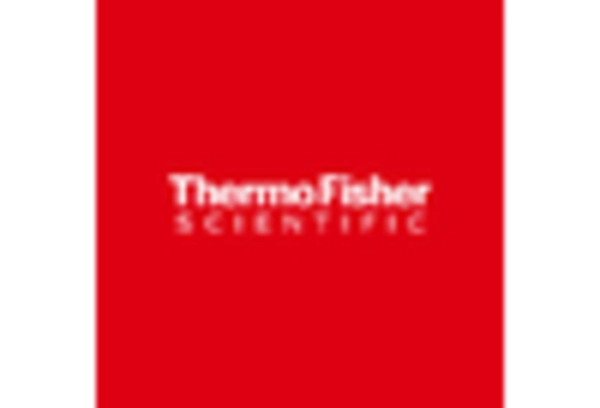









Leave a Comment